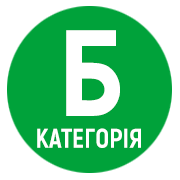RELATIONSHIP BETWEEN SENSE-ORIENTATIONS AND MOTIVATIONAL READYNESS OF STUDENTS FOR PROFESSIONAL ACTIVITY
Abstract
In the article are represented the results of an empirical study of the relationship between meaningful life orientations and motivational readiness of students for professional activity. It was found that the leading orientation of the studied students, which is most pronounced at a high level, is the focus on interaction and cooperation, due to the interests of cooperation, constructive interpersonal communication, the needs of joint activities. It is noted that the focus on cooperation of students with other people reflects their motivation to communicate as a process when it is communication, interaction, and not the specific results of such activities that matter. The students found a predominance of the average level of life aspirations, which can be explained by their mediocre self-confidence, insufficient ability to set life goals according to their own capabilities, as well as the average level of life achievements due to average and low assessment of their ability to manage their own lives. It has been shown that the global Covid-19 pandemic has contributed to the actualization of those needs that are limited or even impossible due to total lockdown. It was found that the motivational structure of students is dominated by high levels of all indicators of life orientation: livelihood, comfort, communication, and «work» orientation, which determine the motivational orientation of students to professional activities in the form of general and creative activity and social utility. At the same time, the developmental motives of professional readiness for activity («working» orientation) of the studied students are higher in comparison with the motives of maintenance (general life orientation). The strongest connection between the indicators of meaningful life orientations is found with the need for recognition, with the need for self-expression and with the tendency to affiliation. The general life orientation of students depends mostly on life support and communication, and the «work» orientation — on general and creative activities.
References
2. Мовмига Н., Мілорадова Н. Деякі аспекти визначення гендерної специфіки життєвих домагань особистості (з позицій особово-орієнтованого підходу до вищої професійної освіти). Vzdelávanie a spoločnosť : medzinárodný nekonferenčný zborník / Renáta Bernátová (Ed.), Tetyana Nestorenko (Ed.). PREŠOV, 2016. С. 187–196. URL : https://cutt.ly/BhKTX7m.
3. Чабаненко І. А. Формування ціннісного ставлення до любовi як складової статевого виховання в педагогiчнiй спадщині В. О. Сухомлинського. Педагогічні науки: збірник наукових праць. 2009. № 54. С. 233–236.
4. Онищенко І. В. Психолого-педагогічні аспекти формування мотиваційної готовності майбутніх учителів початкових класів до професійної діяльності. Наукові записки. Серія: Педагогічні науки. 2019. Випуск 177, частина 2. С. 40–43.
5. Яблонський А. І. Мотиваційний компонент в структурі мотиваційної готовності студентів до педагогічної діяльності. Вісник Харківського університету. Серія: Психологія. 1997. № 395. С. 134–138.
6. Ефимова О. В. Мотивационная готовность студентов колледжа к профессиональной деятельности. Вестник Псковского государственного университета. Серия: Социально-гуманитарные и психолого-педагогические науки. 2009. Вип. 7. С. 166–167.
7. Коптяева О. Н., Афанасьева Н. В. Особенности мотивации инновационной деятельности учителей. Вестник ЧГУ. Череповец, 2007. № 1. С. 110–114.
8. Дмитерко-Карабин Х. М. Мотиваційна готовність до професійної діяльності як психологічна проблема. Філософія, соціологія, психологія: збірник наукових праць. Івано-Франківськ : Плай, 2004. Вип. 9. Ч. 2. С. 23–32.
9. Клімова Д. В. Проблема мотиваційної готовності до професійної діяльності у психології. Єдність навчання і наукових досліджень — головний принцип університету : збірник наукових праць звітно-наукової конференції викладачів університету за 2013 рік, 4–6 лютого 2014 року / укл. Г. І. Волинка, О. В. Уваркіна, О. П. Ємельянова. Київ : Вид-во НПУ імені М. П. Драгоманова, 2014. С. 133–135.







